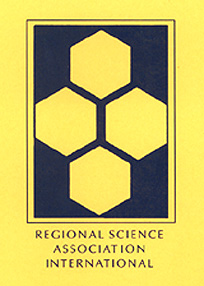Regional Science Association International facts for kids
The Regional Science Association International (RSAI) is a worldwide organization for experts who study regional science. Regional science is the study of how specific areas, like cities or states, grow and change. It looks at things like the economy, population, and environment of a region.
Contents
How It All Started
A New Idea
In the 1940s and 1950s, an economist named Walter Isard had a big idea. He wanted to bring together smart people from different fields to study regions. These regions were areas smaller than a whole country.
He gathered experts in economics (the study of money and trade), geography (the study of places), city planning, and other subjects. He called this new field of study regional science. Because it mixed so many different subjects, there was no single club or organization for these experts to join. So, they decided to create their own!
Creating the Association
They formed the Regional Science Association and held their first meeting in December 1954. The group was a place for these experts to share their ideas and research about how regions work.
The idea quickly became popular. By 1961, the association had almost 1,000 members. The first local group, called a "section," was started in the western United States. This allowed experts in that area to have their own meetings.
A Global Network of Experts
Growing Around the World
After the first section in the U.S., new groups started to form all over the world. In 1963, a section was created in Japan. Soon after, more groups appeared across Europe, India, Argentina, and Brazil. The association was becoming truly international.
By 1990, the organization had grown so much that it needed a new structure. The main group became the Regional Science Association International (RSAI). The RSAI acts as an umbrella organization for other large regional groups.
How the RSAI is Organized
The RSAI oversees three major groups that cover different parts of the world:
- The Pacific Regional Science Conference Organization: This group includes associations from countries around the Pacific Ocean, like Australia, Japan, Canada, and Mexico.
- The North American Regional Science Council: This group covers associations in the United States and Canada.
- The European Regional Science Association: This group brings together experts from associations in countries like Italy, Germany, Spain, and the United Kingdom.
Each of these major groups is also an umbrella for even more specific national or local associations. This structure helps experts connect with others both in their home country and around the globe.
See also
 In Spanish: Asociación Internacional de la Ciencia Regional para niños
In Spanish: Asociación Internacional de la Ciencia Regional para niños


